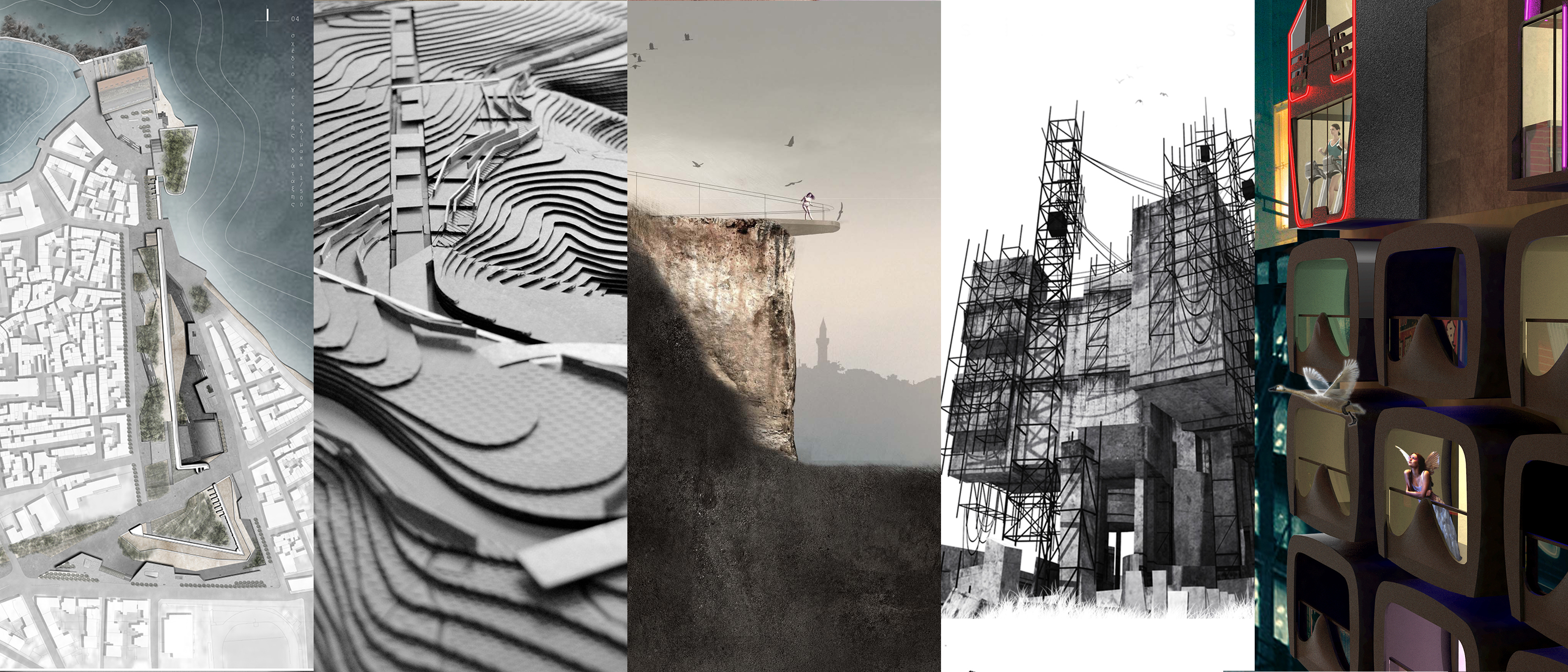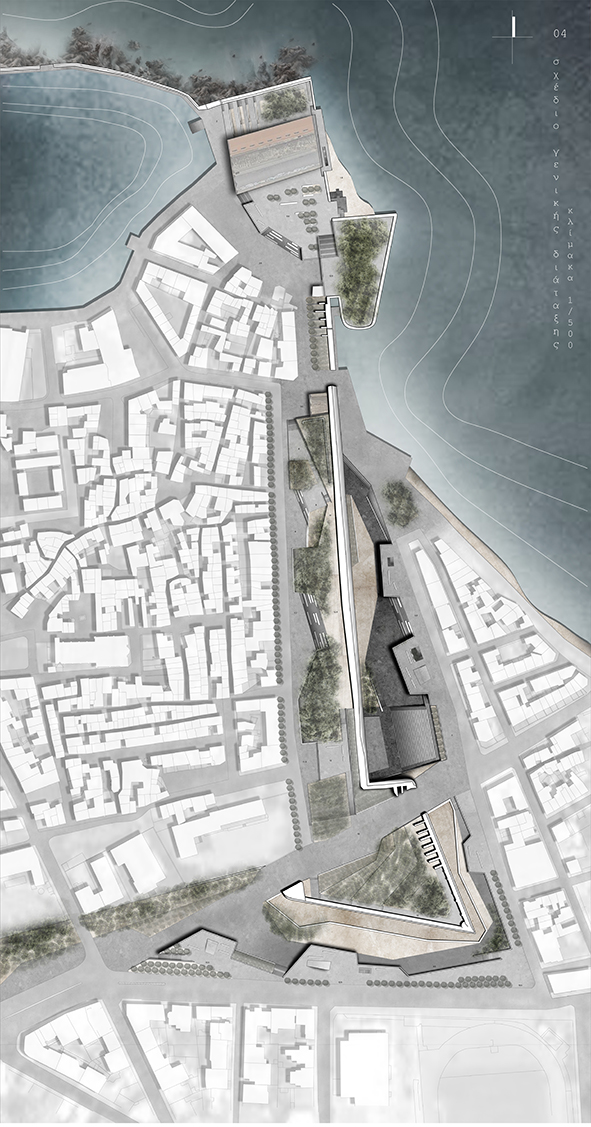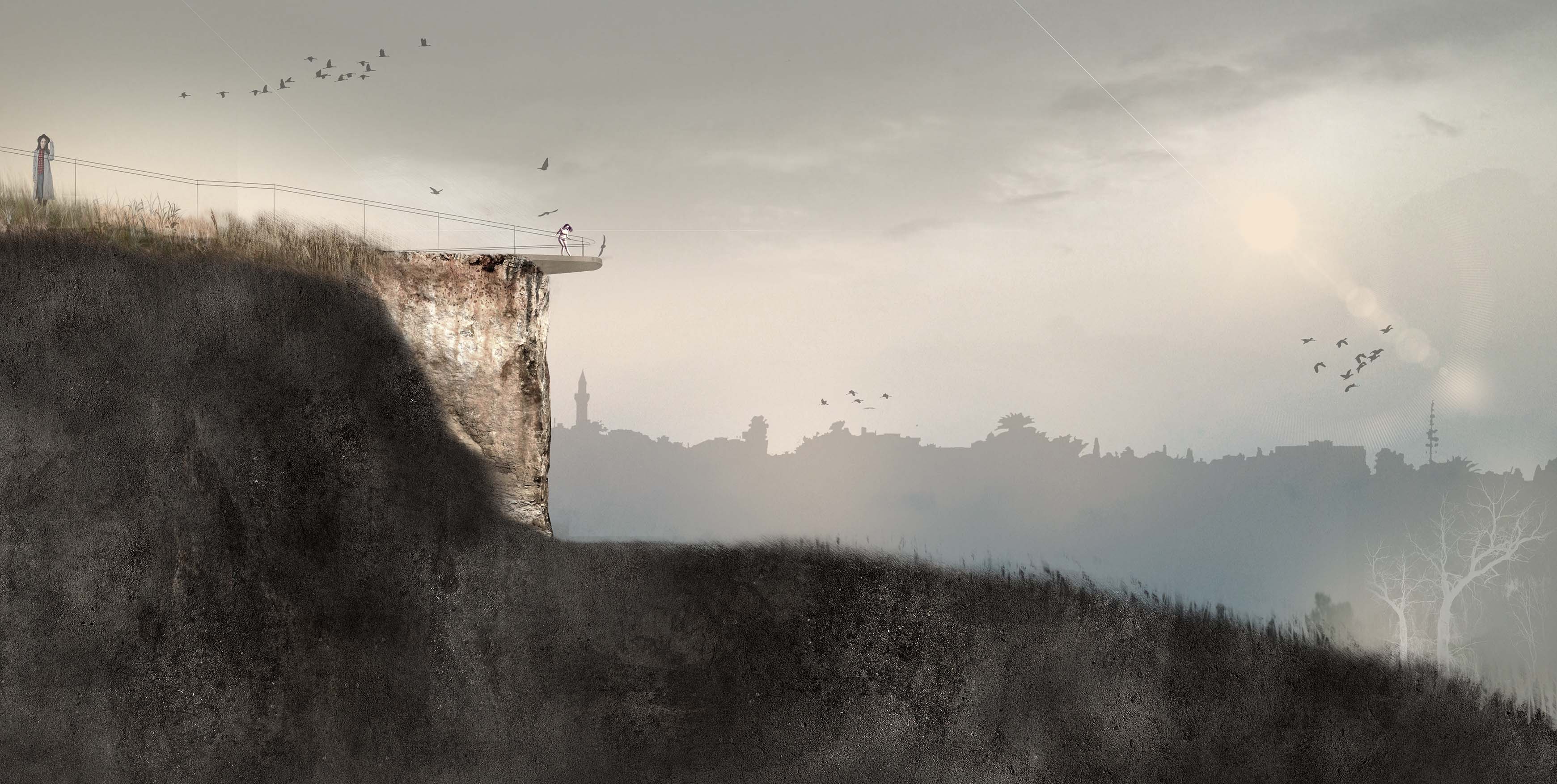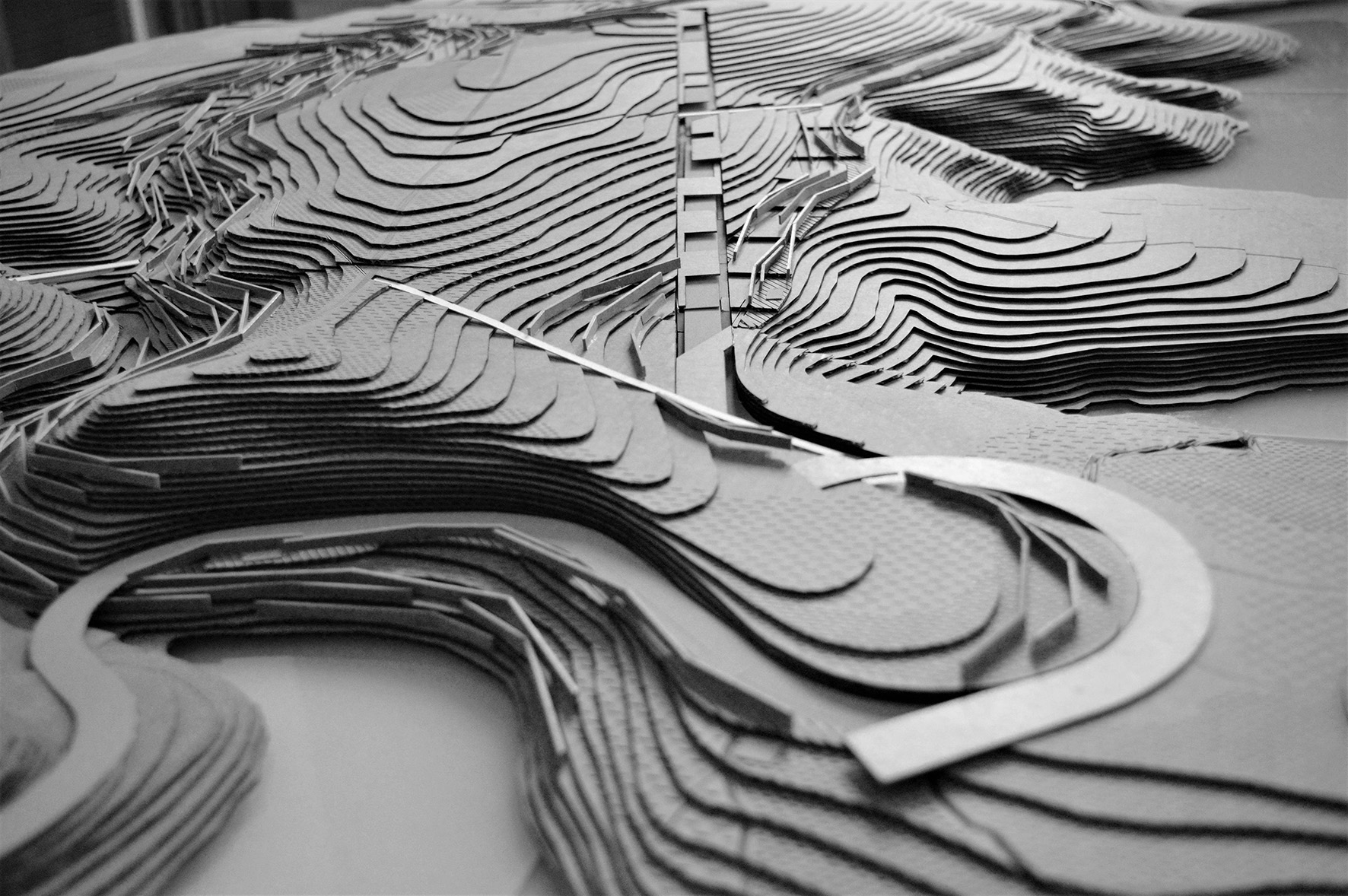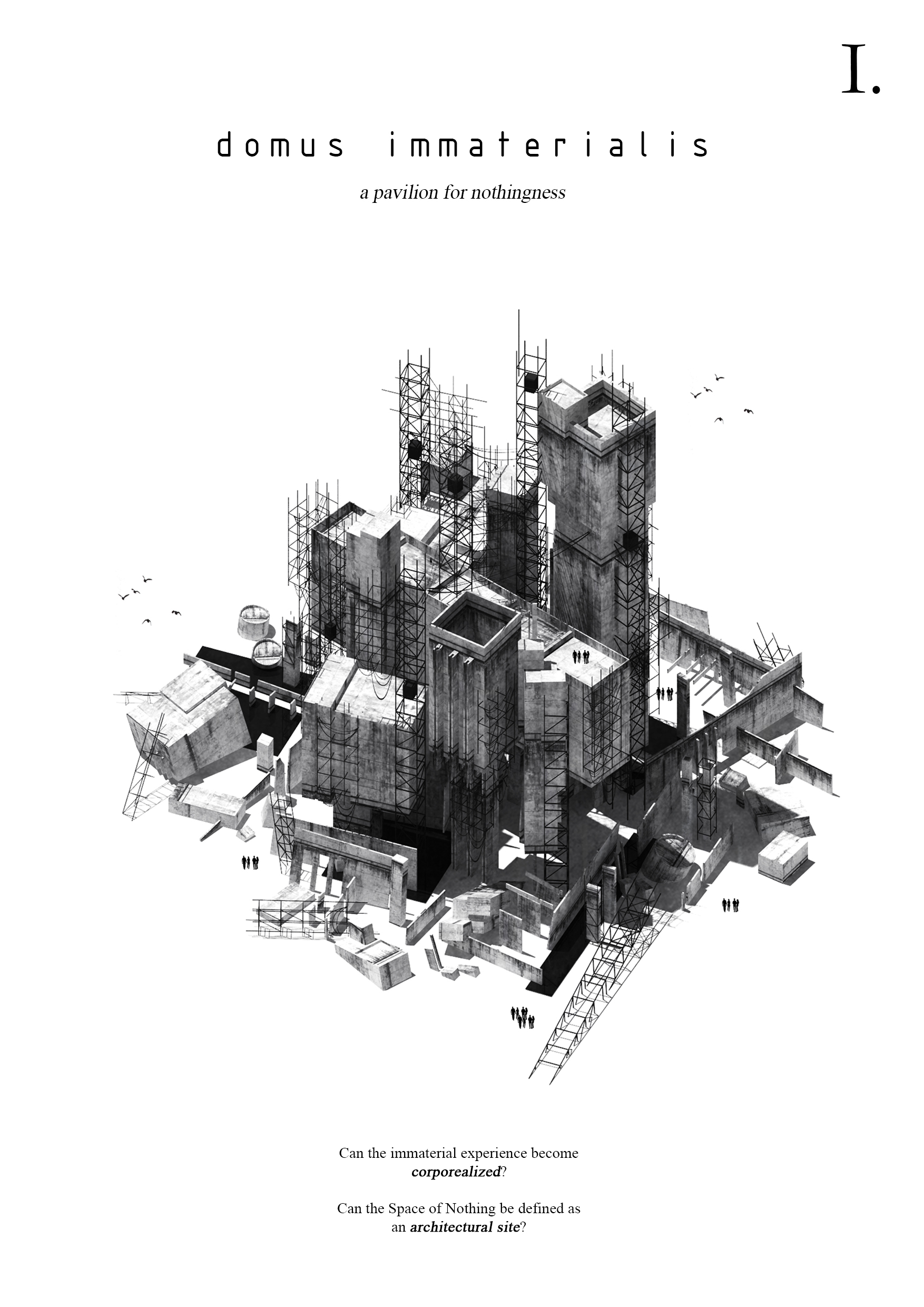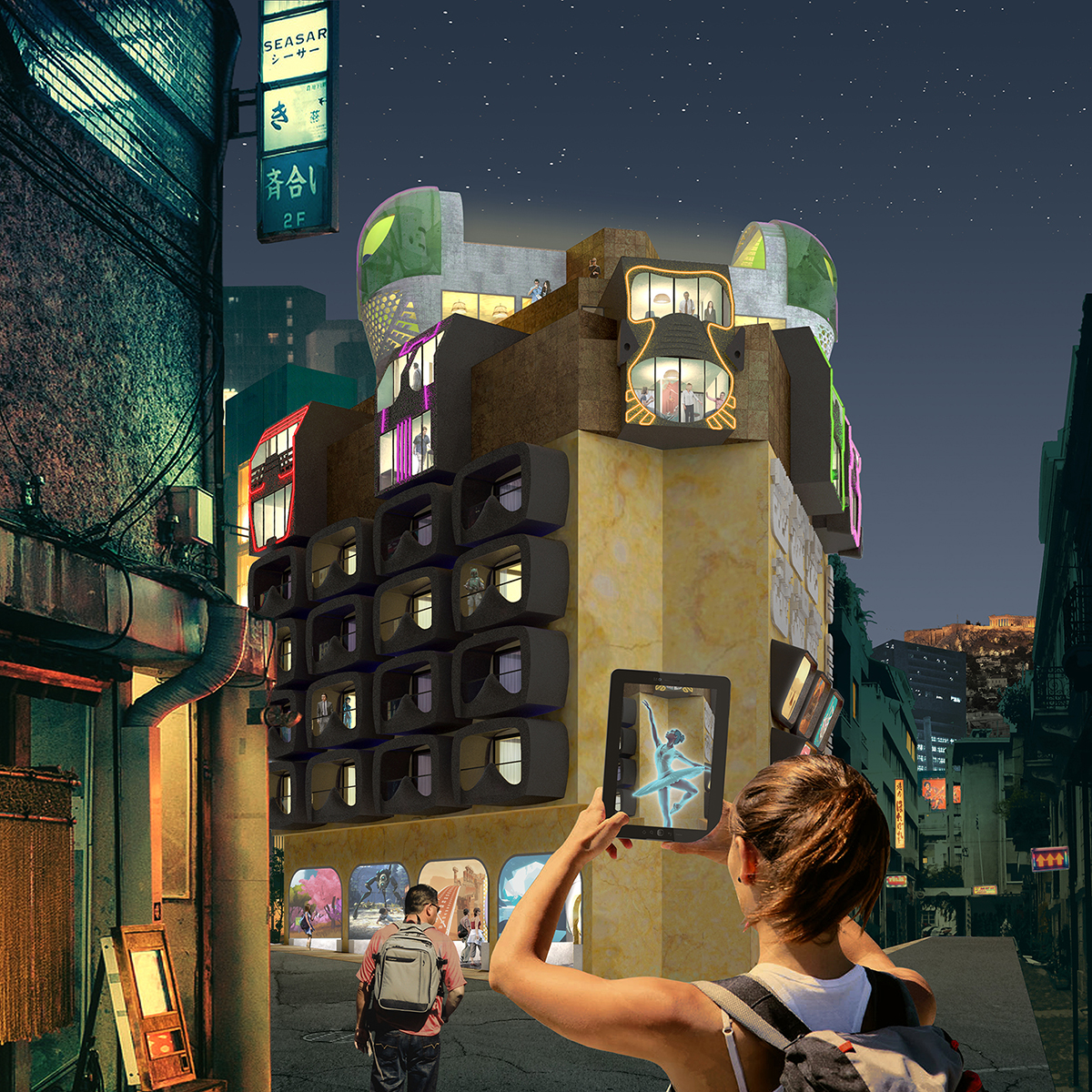WAL(L)king in between
Doudoni Danae- Aikaterini, Papachristou Anastasia
The current diploma thesis attempts to highlight the Venetian fortifications of Chania city whilst configuring a network of cultural routes within the moat, bastions and ramparts. A connection between the historical center and the modern urban fabric is achieved with the creation of free walkways, parks, cultural and recreation areas. The research concetrates on the management strategies of the Venetian fragmented fortification zone, which surrounds the old city of Chania and seeks to create a common design system respecting the multiplicity and complexity of different areas of intervention. More specifically, by developing in depth the strategic intentions that were presented along the walls this proposal focuses on the eastern part of the existing Venetian fortifications while aiming at the functional and urban connections with the city and the awakening of the inhabitants’ historical memory respectively hence the creation of promenades, parks and areas of concentration for residents and visitors alike.
A three-zone design is selected, the first one being at the level of the pavement, acting as a balcony to the moat. The second one located at the level of the moat hosting cultural, educational and recreational uses. Nonetheless, by choosing mainly low vegetation a view of the wall remains uninhibited, yet defferenciated from the character of the third zone; that of the elevated park located within the embankments which offers a new life to the city. However, although the three zones are considered to be parallels, they operate not only autonomously, but they also intrweave; by intersecting with themselves as well as with the historical citys web.
The Road as Topos: An Athenian Getaway at Limanakia, Vouliagmeni
Lampropoulou Aglaia, Bousios Giorgos
The current thesis negotiates the transition of the Athenian coastal highway from a heavily charged traffic artery to a recreational destination, part of the capital’s tourism landscape. This problematic rises from the increasing interest of the Athenians who, due to the crisis, seek a short ‘urban getaway’.
The area of interest is Limanakia, a group of steep gulfs on the verge of Athens’ metropolitan region, now accessible only by car. Located at the point where the Hymettus mountain range meets the Saronic Gulf, this utopian scenery appears as a pause in urban sprawl and typical tourism infrastructure. Its unique character is highlighted by parking lots along the highway, which serve as the single point of reference, although simultaneously forming a strict border between the sea and the concealed hills of the peninsula.
The intention is to reinterpret these successive forms both as departure point and ‘green’ refuge, now redirected towards pedestrians and cyclists. For this purpose, traffic is restricted and channelled into a detour: a linear parking garage ascending the hills. This new infrastructure, imagined on the verge between reality and utopia, attempts to challenge our concept of parking spaces, viewing them as salient landscape features and places of social interaction. Atriums intervene between repetitive, inclined parking levels, including facilities and rest areas, while an elevated open-air lobby serves as the main meeting point.
Hypogean Traces | Mouttalos
Margarita Leriou
The present diploma project is about a mnemonic place in Paphos (Cyprus) and specifically in Moutallos. Moutallos is a picturesque area in the western side of the town and it is the border between the old and the new town. The name of Moutallos come from the Cyprus word “moutti” which means nose and describes the location of the area which is situated on the edge of a cliff. At the bottom of the cliff there are some natural caves. I choose this specific cliff to be the background of my study. In our days Moutallos is almost abandoned because its former inhabitants were Turkish Cypriots who were forced to leave and move to the northern side, after the Turkish invasion in Cyprus. In return Greek Cypriots refugees inhabited the area. The area now has a double identity. Its history is a “taboo” and a deep wound for Cypriots. That is the reason I choose to make a cut on the cliff and create an artificial cave. My aim is to create an underground mnemonic which will narrate the history of the two communities in Cyprus (Turkish Cypriots and Greek Cypriots). Therefore the visitor has the opportunity to pass through time and experience some important aspects of the relations of the two communities.
domus immaterialis: a pavilion for nothingness
Anastasis Floros
Can the immaterial experience become corporealized? Can the Space of Nothing be defined as an architectural site?
The project proposes to create a place that is more than an building. The intent is to create a space by offering to the public an alternative experience and a new way to access the experience. More open and spontaneous, and less sacralised. A platform for experimentation with alternative practices.
The landscape is changed. A new volume sets in. The landscape is in constant renewal. The invisible appears. Space is altered and our perception of the environment is transformed. Our visual perceptions are challenged. Certainties fade, our imagination is provoked during the interpretation process.
The place is still the same, although it leads to a new understanding of our environment. By changing our perception, we question our sense of place. Our altered vision transforms it into a new space, combining our memories with imagined reinventions.
A space to house nothing and everything.
RAPTUREHOOD STUDIOS – Workshop of Extraordinary Experiences
Stathis Stylidis
“One important class of experiential products will be based on simulated environments that offer the customer a taste of adventure, danger, sexual titillation or other pleasure without risk to his real life or reputation.”
In his book “Future Shock” (1970), a book that predicts the evolution of modern societies, the American writer Alvin Toffler analyzes the emergence of the experience as a standalone product and the subsequent development of an “experiential industry”, based largely on Art. If this concept, summarized in the above excerpt, describes the commercial (at least) aspect of theater, cinema, theme parks, videogames and possibly of every form of art and entertainment, then we can assume that in our era acquires its most representative (ultimate?) manifestation through the technologies of Virtual Reality. The recent reappearance of VR devices and applications, mainly in the market of home entertainment, re-introduced this innovative medium to the public, managing undoubtedly to impress and generate interest, but without making clear its range of possibilities.
If virtual worlds have a purpose of existence, that is to make us reconsider our natural possibilities. They question all kinds of boundaries upon which we developed our identity. The “real” world is always our reference point and the “not-so-real” excites and fuels our imagination. Based on this notion are always the science fiction (and just fiction) novels and films appreciated. They narrate a plausible extraordinary situation. The result is the discovery / invention of new parameters that change and enrich established ways of living and ultimately transform our world. This is the desiderata.
The project proposes through designs the conversion of “Evripides Hotel” (79 Evripidou Str, Athens) into an experimental space of research and applications for technologies of virtual and augmented reality, named “Rapturehood Studios”.

